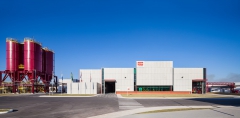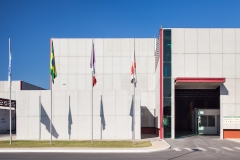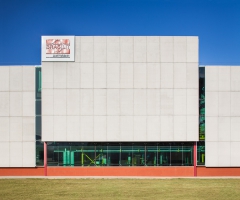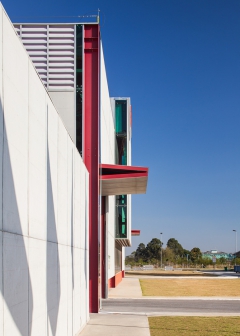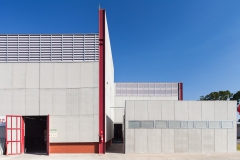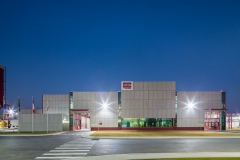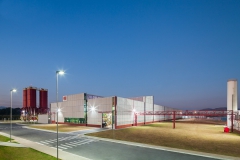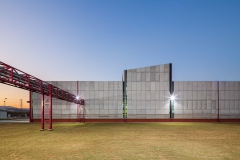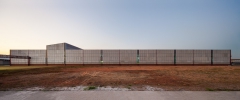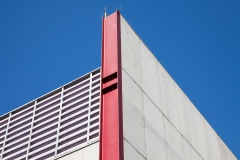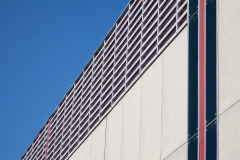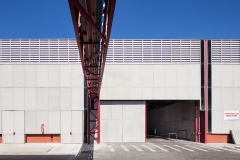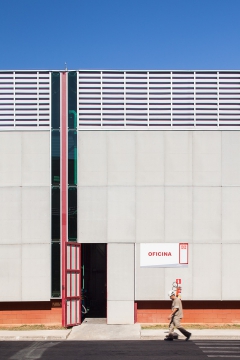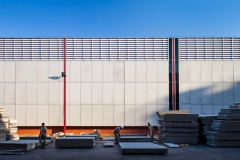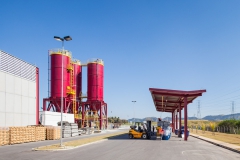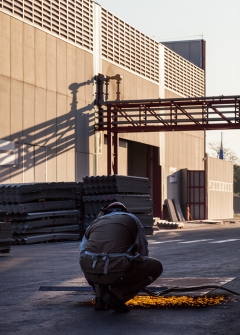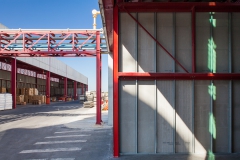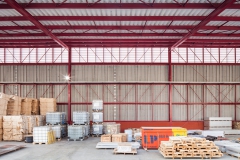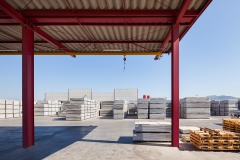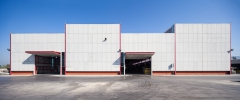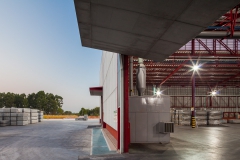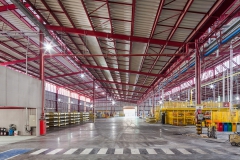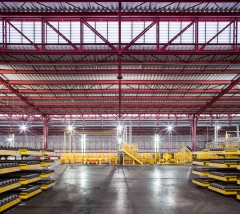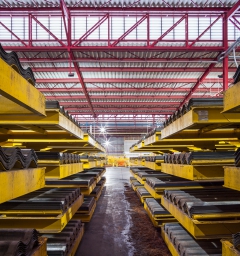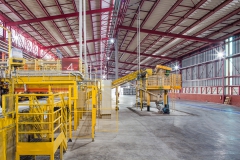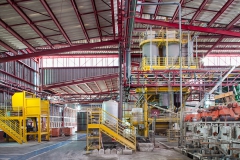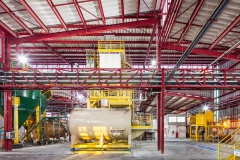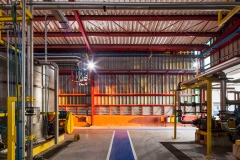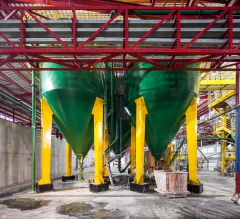The project for the industries Brasilit Saint-Gobain located in Seropédica is characterized mainly by the exploration of architectural possibilities of the constructive system in steel-framing and by the intensive use of the site’s natural condition, on the implantation’s definition and in the settings of the buildings.
The complex occupies the new industrial park created in Seropédica due to the construction of the metropolitan road of Rio de Janeiro. Beyond the areas of production, storage and expedition, the work of landscape recomposition created an area of preservation and another of reforestation.
The main building is set by the complex of longitudinal sheds, defined by the process of production, alternate template offering wide natural ventilation and illumination. Such situation, represents reduction in energy consumption and comes to the needs of the factory, specialized in the production of tiles and plates in fiber cement, the fundamental material in the constructive system that was applied. By this primordial condition, the proposed architecture is a self reference to the functions performed by the building complex.
The architecture takes on the protagonist condition in relation to the knowledge and evolution of the constructive system, not limited just on closing part, on the contrary, it is the own materialization of the aesthetic expression built. Brasilit Saint-Gobain in Seropédica carries out the part of communicating, demonstrating and mainly of developing solutions and innovations of usage, based on the potencial of the materials produced by the group Saint-Gobain.
The metallic structure is strongly marked in all of the complex’s facades. Whenever possible, it’s presence is still valued by the glass closing, that highlight the transition between the structural elements and the closing panels, allowing to recover the constructive module.
The longitudinal sheds system sets itself by multiple “prisms”, each one performing a specific function in the production process. The central shed, higher, possesses double closing in translucent blinds, allowing the crossing of natural ventilation and illumination, a favorable mechanism to the performance of the process.
The south facade’s prism is what allowed a bigger number of solutions with plates of fiber cement. It is less exposed to the natural insolation and allows the caption of fresh air along all of its extension, the closing is composed by the graphic game between the modules of the plates, the blinds produced with its own plate, by glass and the concrete base.
The opposite situation occurs in the area of product’s drying, next to the prism of the north facade, totally closed, kept only the superior line in translucent blinds, that give the hot air a way out.
The two transversal facades, frontal and rear, are results of the dynamic made possible by the solution described above, that is, present a volumetric composition between the prisms, complemented by the details of opening of the acesses, always resolved with the best constructive system.
The constructive system was explored with all its possibilities. That can be observed in the manufacturing of fanlight gates and sliding gates, and the doors and other secondary closings.
The auxiliary structures of support were projected following the structural dynamic.
Project’s data sheet
Project’s year: 2013
Work’s year: 2015
Terrain area: 98.352 m2
Built area: 15.532 m2
Architecture: Claudia Nucci e Valério Pietraroia
Collaborator: Cesar Sakon
Metallic structure calculative: Luiz Vinicius Morelli
Owner: Brasilit Saint-Gobain
Project Manager: Alexandre Vasconcelos Rodrigues
Project manager adjunct: Rodrigo Luís Campanhã
Work’s execution: Cegil Construtora
Metallic structure manufacture: Estrutel Estruturas Metálicas
